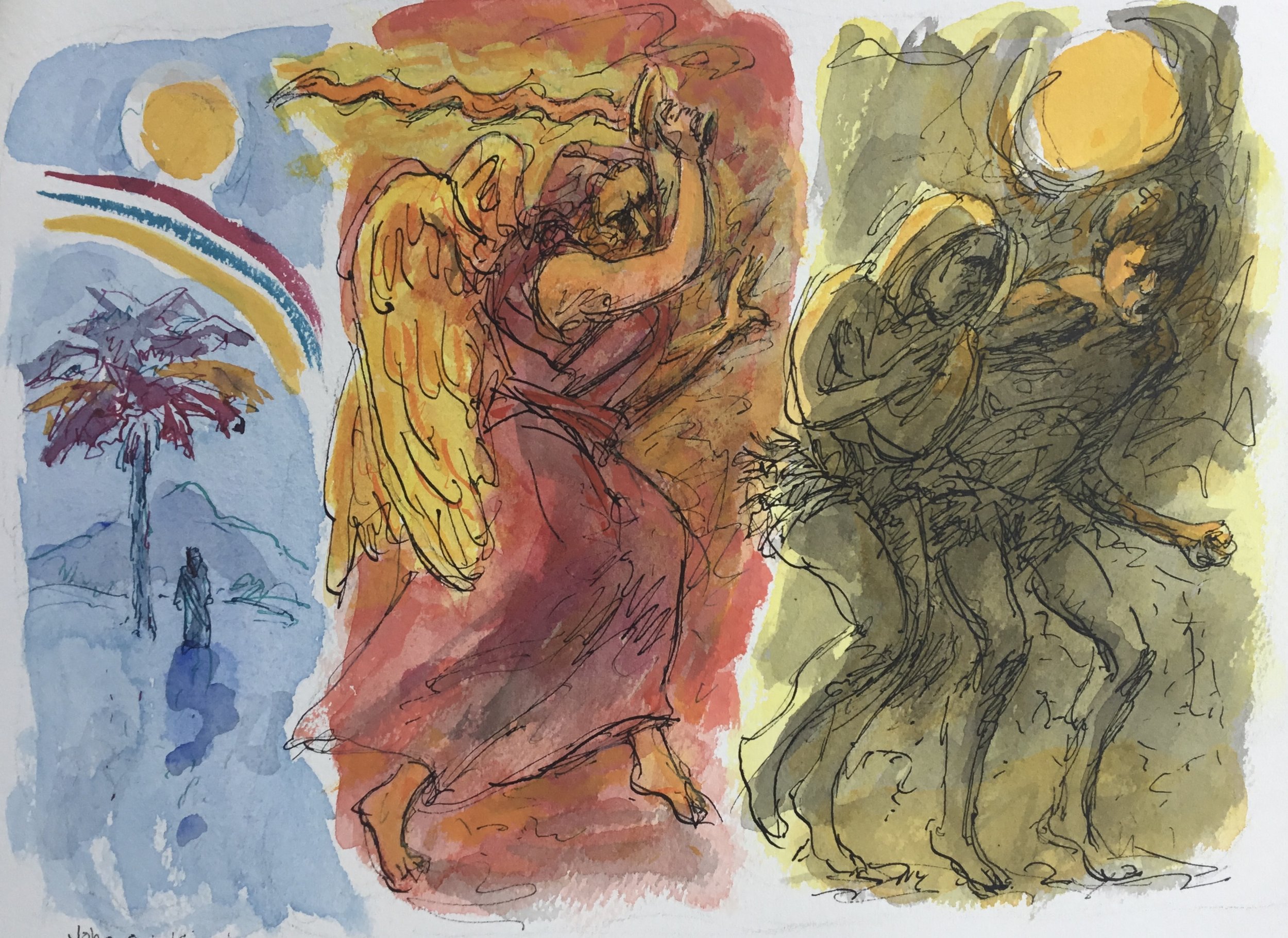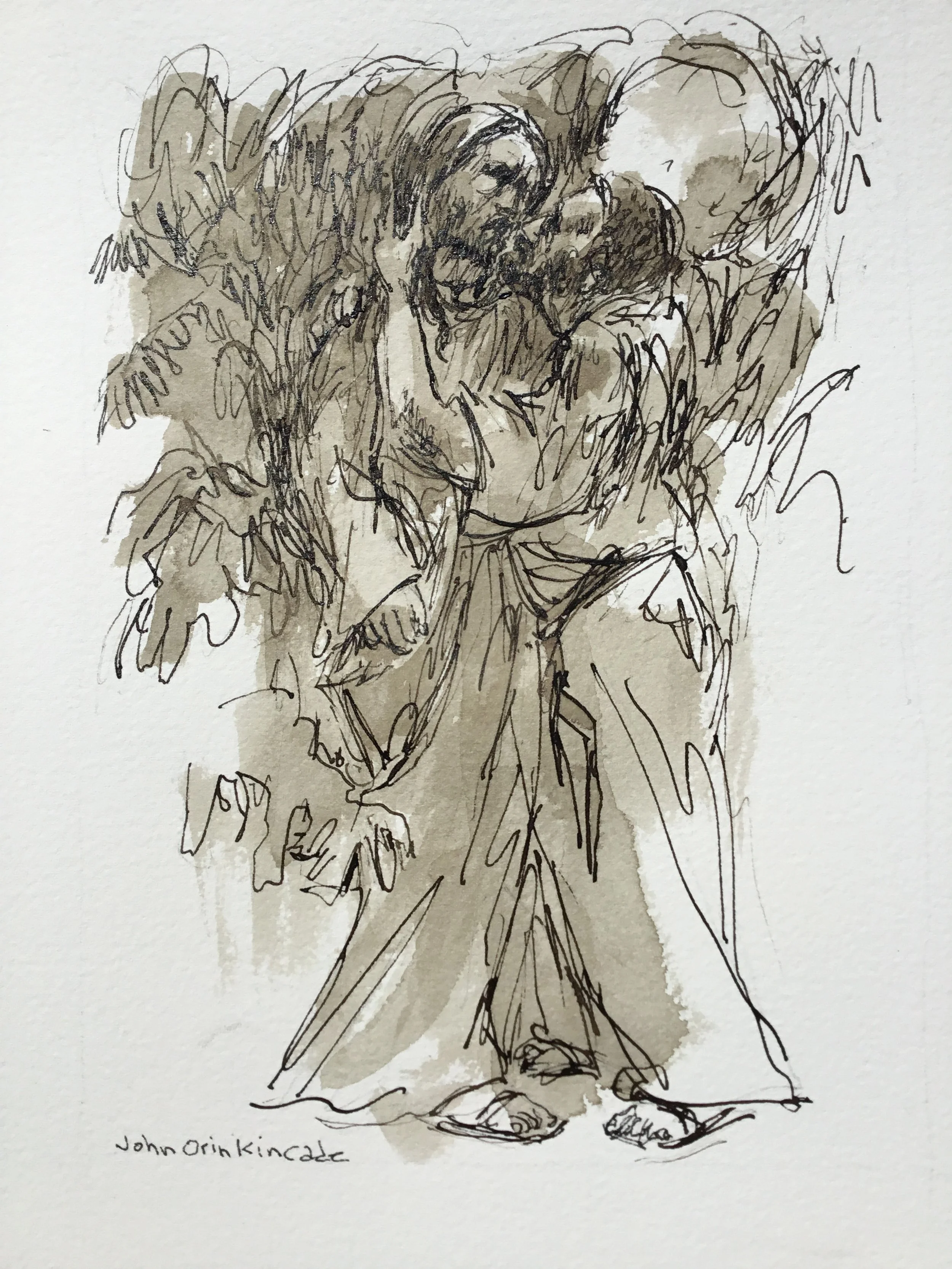The Garden
: a plot of ground where herbs, fruits, flowers, or vegetables are cultivated: a rich well-cultivated region: a public recreation area or park usually ornamented with plants and trees (Merrian-Webster)
Yahweh God planted a garden in Eden which is in the east, and there he put the man he had fashioned. Now both of them were naked, the man and his wife, but they felt no shame in front of each other.
Genesis 2:8 & 25
The first few chapters of Genesis is a theme that has interested me on and off over the years, more off than on. Part of the problem is that it has been rendered so often and so famously that is hard to get those images out of your head. How do I get past Michelangelo’s ceiling or Durer’s engraving of the infamous couple standing like classical Greek statues, each with a wholly inadequate randomly appearing leaf for modesty? A Quaker Edward Hicks did sixty-two versions of the Garden of Eden entitled “Peaceable Kingdom,” a none too subtle message of America as the promised land. More polluting than all is the avalanche of flat realistic illustrations where the healthy couple looks like 1950s TV stars selling soap or better cars and the suburban lifestyle. Of course who am I to talk, I did work in advertising after all. We are all victims of our time and place. We take all the noise of the fashionable certainties that surround us and proceed confidently. It is a bit tricky though, how many thousands of years ago was this story first told and in what part of the world? Talk about water under the bridge. How could it possibly be relevant?
I needed to come to it sideways. I did numerous versions of each of my Garden drawings. I was struggling with finding a visual vernacular to in my exploration. The artists I eventually drew from were Titian, Matisse and Gauguin. Their paintings were not religious. However, if you look closely, you can see they themselves had drawn from the Western Christian tradition in painting. The history of art is a long conversation. Think of it as a revolving door.
No one should attempt to discern a biblical truth from my drawing. It is what it is, an arrangement of colored lines and shapes. Watercolor and pen and ink are a quick, unpretentious medium, which allows me to create short visual essays. I was exploring the reality of a lost home before time and words, but in the end I wrestle with line and color.
Then Yahweh God gave the man this admonition, ‘You may eat indeed of all the trees in the garden.Nevertheless of the tree of the knowledge of good and evil you are not to eat, for on the day you eat of it you shall most surely die.’
Genesis 2:16-17
We all know how the story goes: the serpent, Eve, the fruit and clueless Adam. It is hard to wrap our heads around the idea that a bite from an apple could throw all creation into turmoil, but there it is. I suppose I was reimagining Albrecht Durer’s work here. Durer’s Adam and Eve have solid form rendered in great precision through the medium of etched lines in metal. When I draw, I’m not trying so much to get it visually correct as much as finding out what the marks and colors can give me.
So Yahweh God expelled him from the garden of Eden, to till the soil from which he had been taken. He banished the man and in front of the garden of Eden he posted the cherubs, and the flame of a flashing sword, to guard the way to the tree of life.
Genesis 3:23-24
The finality and violence of the Expulsion is what compelled me to start this series. As I mentioned before I did numerous versions of the scenes depicted. I have included two of my versions of the Expulsion here. The first version fits more formerly with the earlier drawings - that is form in the sense of line, color and technique. But the blue section of the second one to me expresses the loneliness and sadness of separation going both ways. God grieves and is partially broken - probably not solid reform theology, but there it is.
“But look, the hand of the one who betrays me is with me on the table.”
While he was still speaking, suddenly a crowd appeared, and the man named Judas, one of the twelve, was leading them. He walked up to Jesus to kiss him. But Jesus said to him, “Judas, would you betray the Son of Man with a kiss?” When those who were around him saw what was about to happen, they said, “Lord, should we use our swords?” Then one of them struck the high priest’s slave, cutting off his right ear. But Jesus said,“Enough of this!” And he touched the man’s ear and healed him.
Luke 22:21, 47-50
If I had trouble sleeping the thing that would keep me awake is grasping the love of God.
My first drawing was more elaborate than the one above: the Garden of Gethsemane at night where moonlight mixed with the light from torch-bearing Roman soldiers casting shadows from the twisted branches of ancient olive trees. It looked like an art director’s story boarding of a Cecil B. DeMille movie. After a series of drawings striving for the essence of my inquiry, I landed on this drawing. The powerful weight of the story is the reality within its humanity. Lay aside the theological lessons to be drawn or Christ’s divinity. Judas loved Jesus and he betrayed him, betrayed him with a kiss. In the midst of the betrayal and pain Jesus continued to love Judas.




